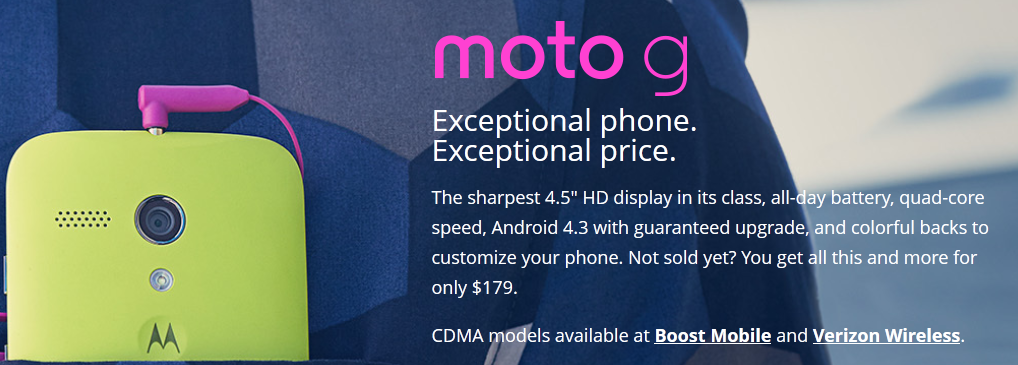Strategic Planning
Strategic planning is the managerial process of creating and maintaining a fit between the organization’s objectives and resources and the evolving marketing opportunities. When you analyze Motorola's strategic planning in the past year, it is clear that they are focused to obtain new customers by providing a new set of features and options from their latest products. Motorola's CEO Dennis Woodside emphasized in an interview that their new products stands as a feature packed and affordable mobile phone experience. This interesting take on smartphones is a result of strategic planning. It could affect the company's future and ultimately its financial success.
This strategy of Motorola is evident in their new line of products. Their latest product, Moto X allow customers to build
their own phone in variety of ways. It gives the option to choose unique
colored back plates from several different materials. Not only that it also allows users to choose the colors for accents and buttons, such as volume rocker
buttons, and power button for their device. They are currently advertising it
as "a phone that's truly yours" since there are thousand ways to
customize the Moto X. Moreover, it features voice activated commands which works from a proprietary SOC that always listens to the user’s voice when it’s
turned on. It also has an attractive price tag of $399 which is considerably cheaper than what other companies offer.
These features and options allowed them to differentiate their product from other leading brands,
such as Apple's iPhone and Samsung’s Galaxy series. Therefore, Motorola earned a product
differentiation advantage, since they
were offering something unique and valuable to buyers beyond simply offering a
lower price than that of the competition.
Market Development
Market development is a strategy that entails attracting new customers to existing products. Motorola failed to initiate this marketing strategy since they were focused on selling the Moto X exclusively in the U.S market. Therefore, Motorola was unable seize the foreign smartphone markets. They released Moto X in Europe on February 1st, after almost 6 months from the release. Add to that, Moto X is yet to make an appearance in the Asian market which has a grossing smart phone demand according to a 2013 Nielsen Research. In contrast, Apple’s iPhone and Samsung’s Galaxy devices were available to customers in Europe and Asia few days after U.S release. It helped them to gain the market share early, even though they did not offer the features that are available in Moto X.
Diversification
Product diversification is a strategy of increasing sales by introducing new products in to new markets. Motorola implemented this strategy with their new product “Moto G”. It is a comparatively feature full smartphone at a remarkably low price. It has a similar design language to Moto X, but when it comes to price, globally unlocked Moto G costs only $179.This handy price tag targets emerging markets, such as Brazil, Chile and Peru. Moreover, it lures in customers with strict budgets, such as high school and college students. Motorola is not the first company to offer a cheaper solution for smartphone seekers, but the only difference is that Moto G is created with quality components compared to other phones in its category.
 |
| Moto G |
Sources : New York Times: Moto X Heads to Europe
New York Times: Motorola to Offer Moto G Smartphone Aimed at Emerging Markets
No comments:
Post a Comment